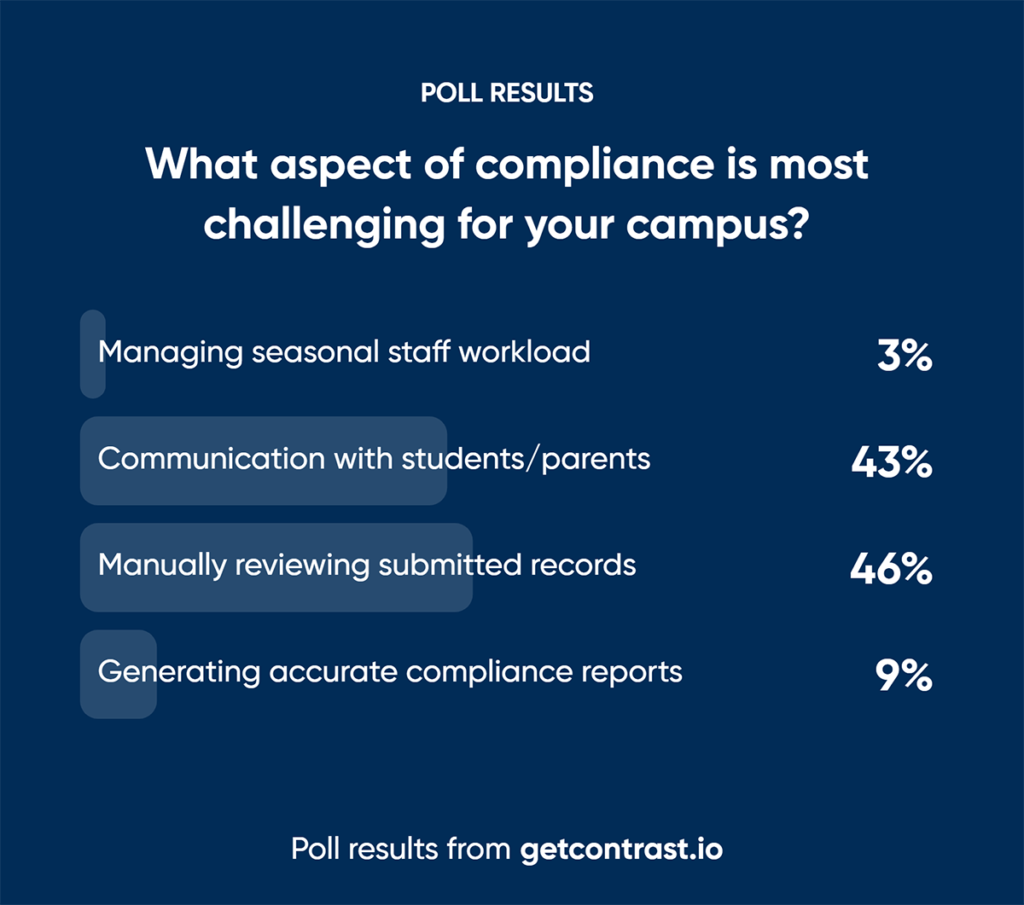Innovative Ideas for College Wellness Spaces
Over 40% of college students reported significant symptoms of depression in 2023. In response, student well-being has moved to center stage in higher education, prompting institutions nationwide to reimagine campus wellness.
Today’s colleges and universities are pioneering spaces that go beyond traditional counseling services. From high-tech relaxation pods and biofeedback systems to meditation rooms and sensory-rich environments, institutions are implementing creative solutions that actively support mental health, reduce stress, and enhance overall well-being.
In this article, we’ll highlight four campus wellness spaces that are transforming student self-care to inspire new ideas for your campus.
Colorado State University’s Reflection Space
At Colorado State University (CSU), wellness goes beyond traditional health services. The university has created unique spaces that encourage relaxation, stress management, and self-care within their Still Point Reflection Space. The space serves as an area for students and staff to have a dedicated area for meditation, prayer, and relaxation.
The integration of technology and traditional mindfulness practices makes CSU’s approach to wellness both innovative and accessible.
Here are some features of the center:
Relaxation (Nap) Pods
One of CSU’s standout wellness initiatives is its Relaxation Pod, located in the Still Point Reflection Space. Designed for students and faculty to recharge, the pod offers 20-minute sessions that can be booked online or in person at the Health and Medical Center.
P.S. – Research shows that short naps can enhance cognitive function—especially when taken before 1:00PM—making this an invaluable resource for students juggling demanding schedules.
Heart Math: Stress Reduction Technology
CSU also provides students and employees access to HeartMath, a biofeedback device designed to help with stress management. Biofeedback technology has been shown to lower stress levels by helping individuals regulate their heart rate and breathing.
CSU’s Reflection Space exemplifies the university’s commitment to holistic well-being, offering students and staff a place to relax, recharge, and manage stress through a blend of mindfulness and technology-driven wellness solutions.
Hampton University’s SheCare Wellness Pods
Hampton University is another institution redefining campus wellness. The university has introduced SheCare Wellness Pods, an innovative wellness initiative aimed at providing culturally relevant mental health resources to its students.
Highlights of the pods include:
Creative Design
The pods themselves are repurposed freight containers featuring vibrant artwork depicting smiling young women surrounded by flowers, with “Water Yourself, HU!” displayed prominently. Inside, students find a welcoming Resting Room equipped with a lounge bed, comfortable seating, warm lighting, and contemporary art to create a tranquil atmosphere.
Integrative Wellness Offerings
Furthermore, Hampton’s approach to student wellbeing also includes several mindful services including Art Therapy sessions, Sound Bath Meditation utilizing crystal singing bowls, Aromatherapy & Herbalism classes, and a vegan cooking series connecting nutrition to mental health. These diverse resources help students prioritize mental health and develop sustainable self-care practices.
Old Dominion University’s Meditation Room
Old Dominion University offers students a dedicated Meditation Room within the Office of Counseling Services—a private sanctuary designed to support mindfulness practices and provide respite from academic pressures.
Here’s what students can access in the meditation room:
Personal Mindfulness Space
The Meditation Room serves as a quiet, therapeutic environment where students can practice mindfulness and find moments of peace between classes. Each student receives exclusive access during their reserved session, creating a truly personal experience. Students can book thirty-minute appointments through their student portals, ensuring the space remains easily accessible.
Guided Meditation Resources
Furthermore, students also have access to various meditation tools, including specialized meditation cards available within the room that provide different practice suggestions.
For those preferring digital guidance, an iPad loaded with meditation apps can be requested from the front desk. The innovative Reflect Orb allows students to monitor their mood while following guided sessions, creating a more intentional practice.
Multi-Sensory Relaxation Elements
The room features several sensory elements designed to deepen relaxation, including a light projector, a soothing sand garden, and a Breathing Buddha that guides users through the 4-7-8 breathing technique. Additional amenities include an aroma diffuser, ambient speakers, and creative outlets such as coloring books with colored pencils.
UMass Lowell’s Serenity Center
At the University of Massachusetts-Lowell, their Serenity Center offers students a dedicated space for relaxation and holistic wellness, featuring a variety of evidence-based stress reduction tools and mindfulness resources.
Multi-Sensory Relaxation Resources
The Serenity Center provides students with access to numerous therapeutic items, including comfy lounge chairs and bean bags that invite deep relaxation.
For instance, the space features sensory tools like tongue drums of Aztec origin and Tibetan singing bowls that promote stress relief through sound therapy. Essential oil diffusers and sound machines engage multiple senses, creating an environment conducive to mental restoration.
Mindfulness and Creative Activities
Students can explore various mindfulness practices through activities such as coloring, knitting, and journaling.
Additionally, the center offers adult coloring books and journals for personal reflection, along with fidget toys that provide an outlet for anxiety and restlessness. For those seeking more structured engagement, brain teasers and puzzles are available to boost cognitive skills.
Holistic Wellness Elements
Furthermore, the Serenity Center incorporates elements of ancient wellness traditions, including crystals for intention-setting and energy work, alongside LEGO® bonsai trees that symbolize harmony and balance.
Massage chairs offer physical relief, while affirmation cards help students develop positive thought patterns. Unique items like peacock feathers provide both sensory experiences and concentration practice, reflecting the university’s commitment to making diverse wellness options available to all students.
Key Takeaways
These innovative spaces—featuring everything from relaxation pods and biofeedback technology to serene meditation areas—represent a fundamental shift in how institutions approach student well-being.
Combining modern technology with traditional wellness practices, these environments offer students a holistic approach to self-care. As more universities embrace such initiatives, they foster a culture of support that enhances both mental health and academic success.
Want to keep the conversation going? Explore how colleges are rethinking wellness with collaboration and data-driven strategies.












 Medicat, the #1 EHR software provider for college health, is thrilled to announce the appointment of
Medicat, the #1 EHR software provider for college health, is thrilled to announce the appointment of 



